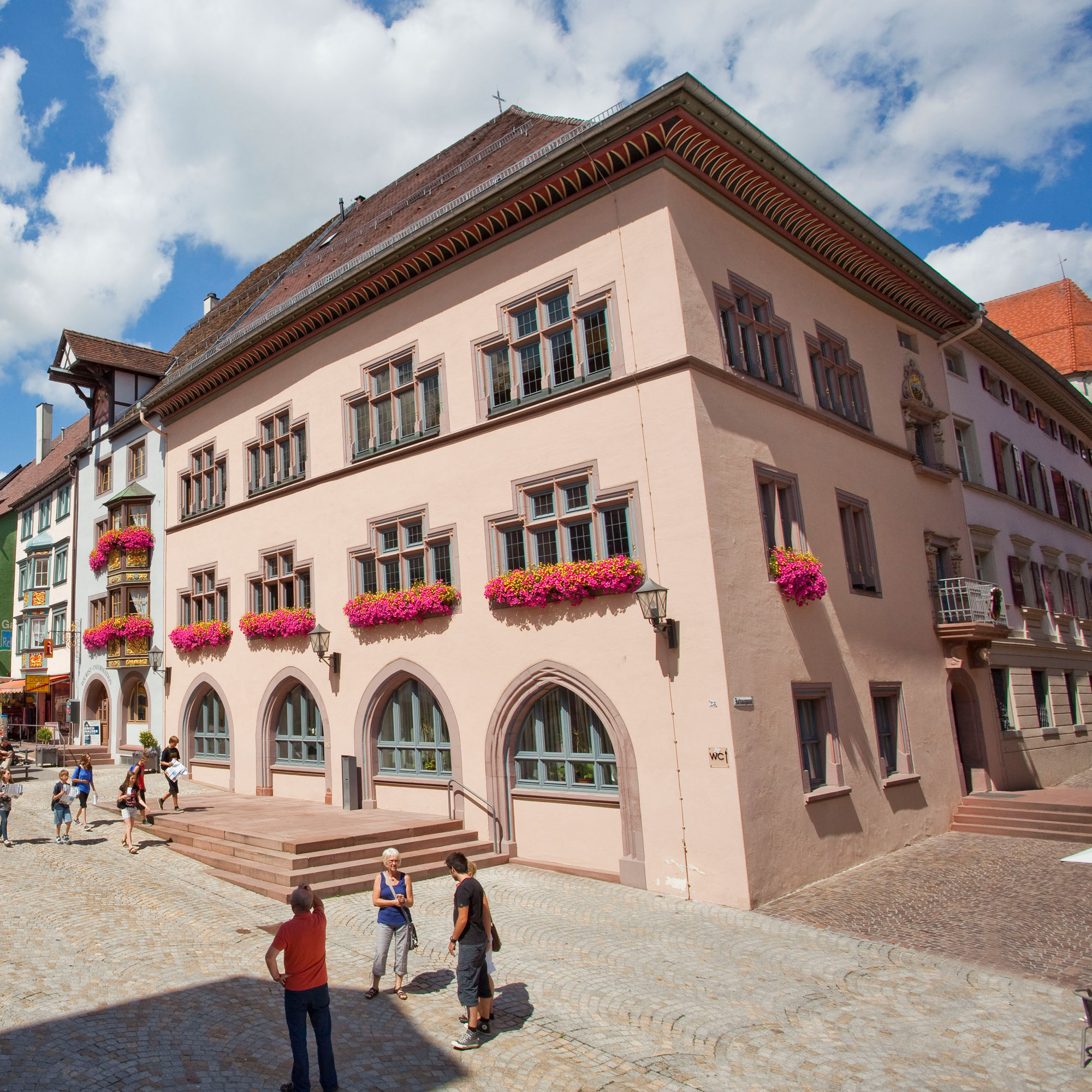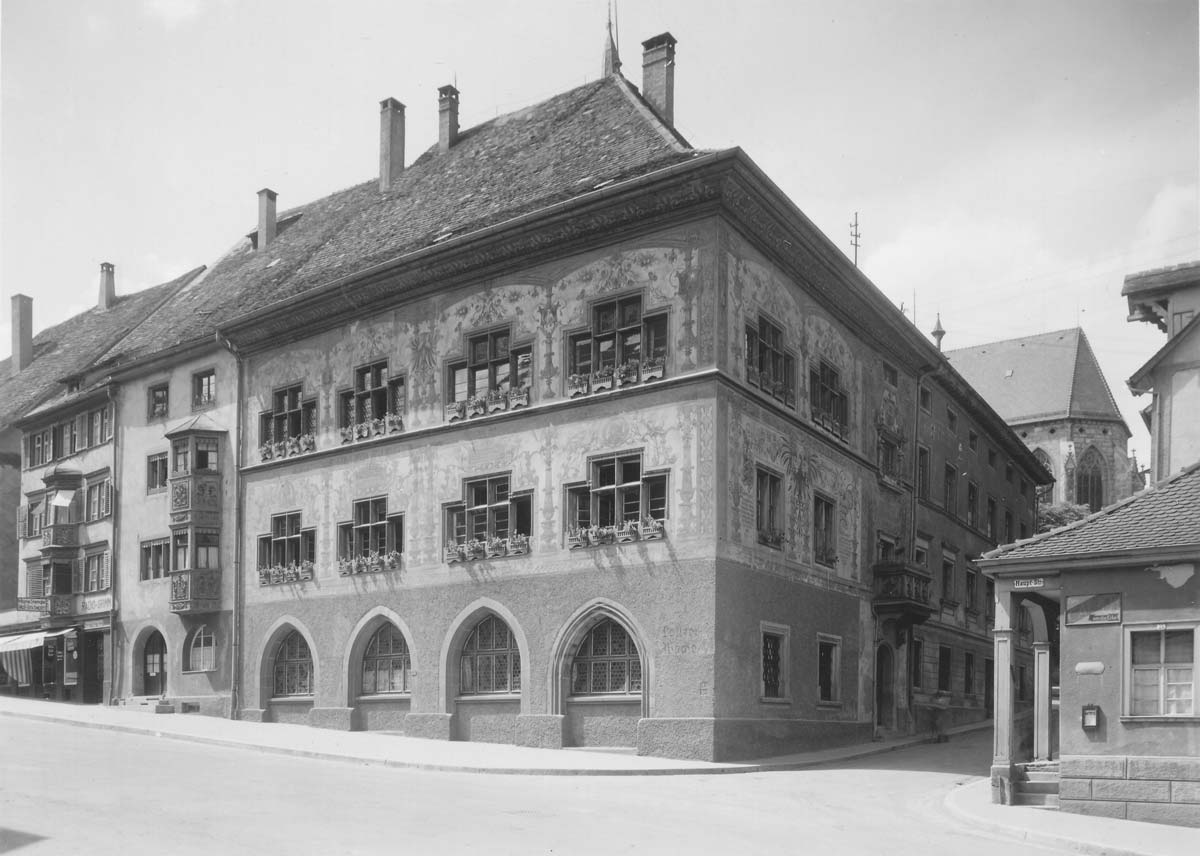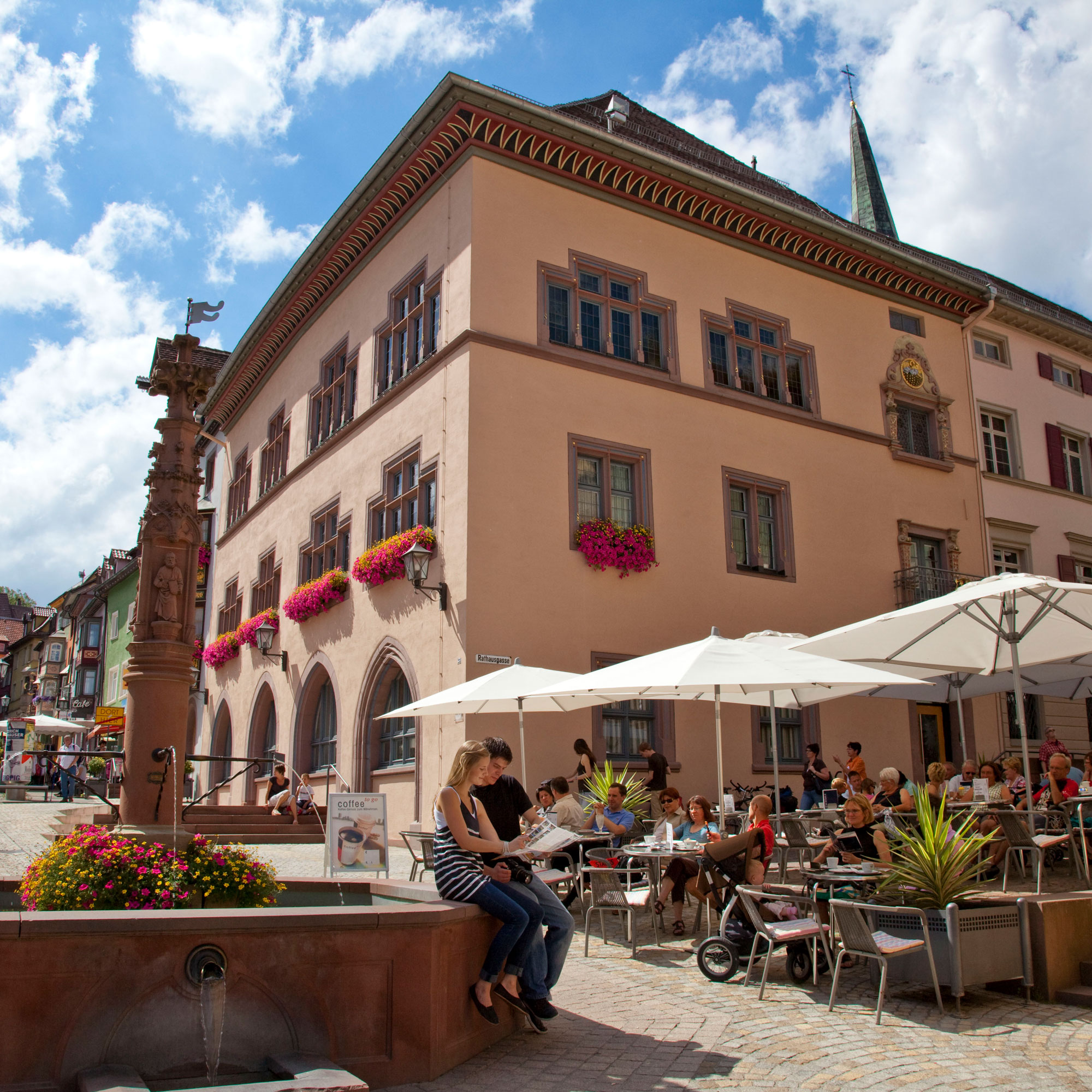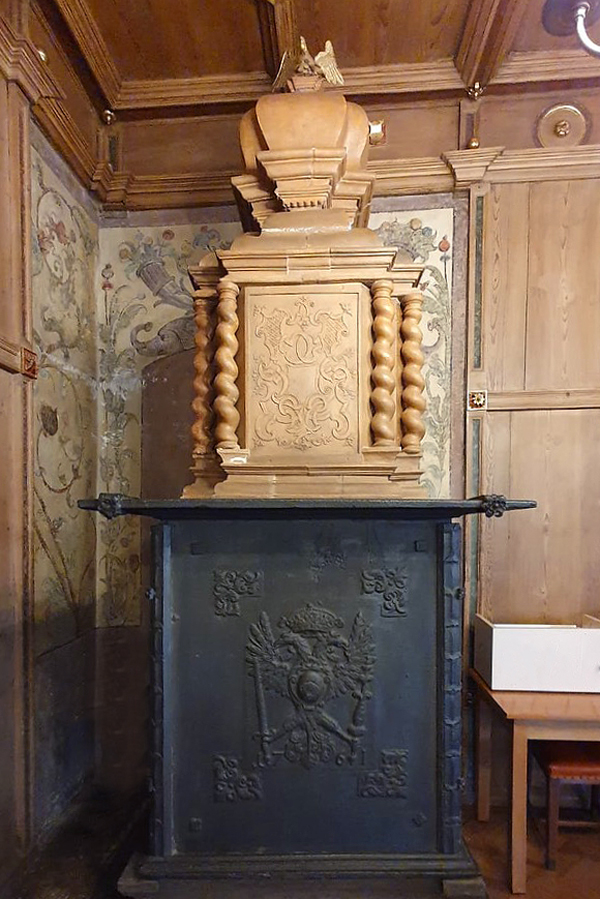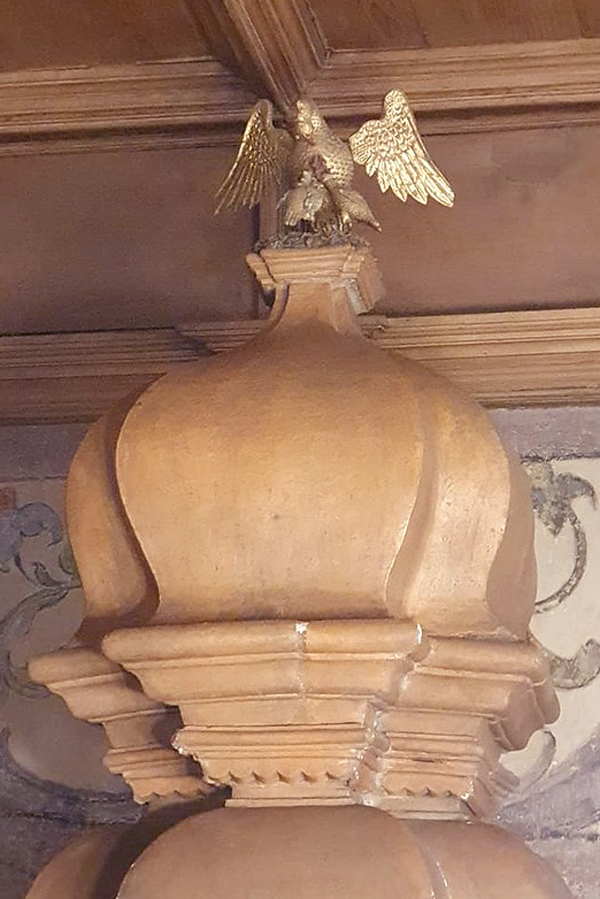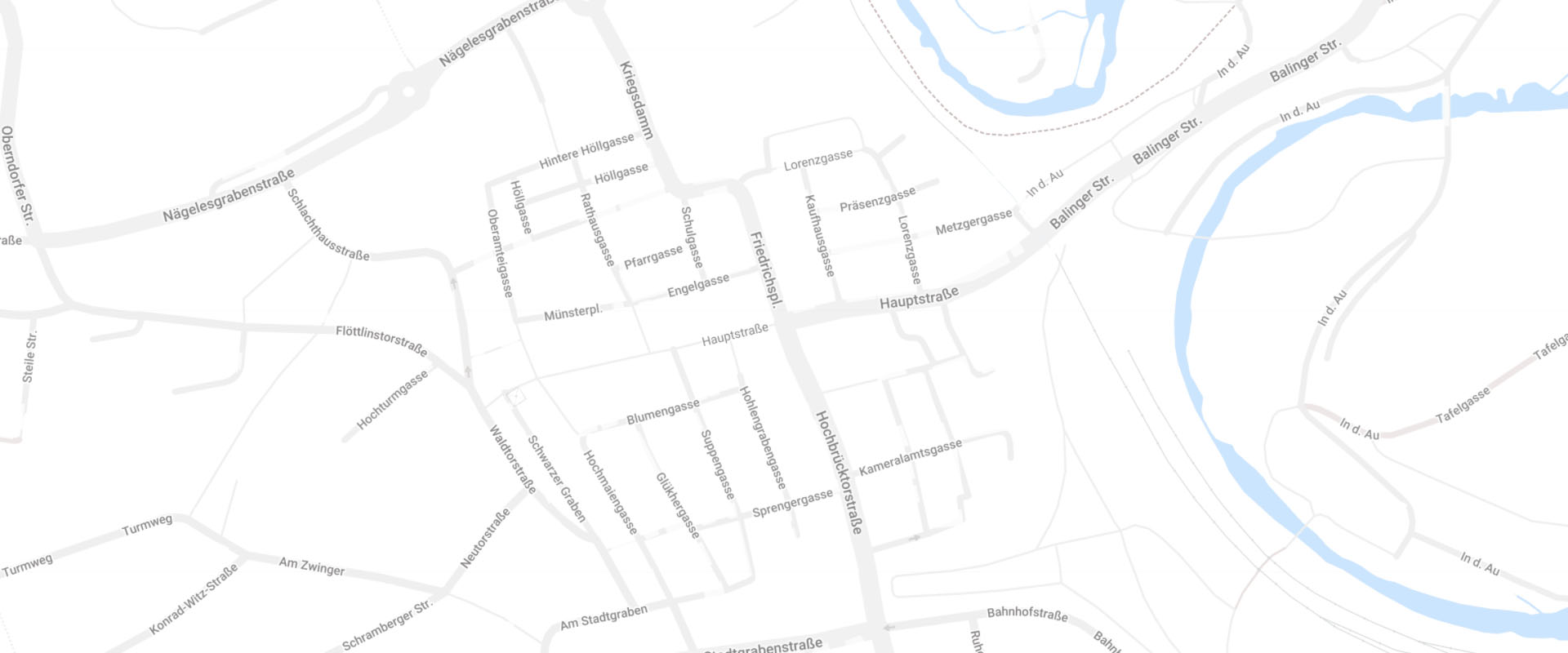Walking through the Black Gate, down the main street or “Hauptstraße”, you will find yourself in front of the old town hall, the “Altes Rathaus”. As early as in 1321, a municipal court record mentions the words “our town hall”. At that time, the town hall was a two-storey building, with the ground floor acting as a marketplace. The first floor housed the council chamber that could be reached from the rear side by a high, outdoor stairway.
Around the year 1500, there was a lot of construction work being done in Rottweil. Two extra floors were added to the tower of the “Kapellenkirche”, and the Gothic nave was constructed in the “Heilig Kreuz Münster”. The town hall was extended as well and received its late Gothic facade with six-paned windows – all that in order to present the respectable image of the town in a dignified manner and to meet the increasing demand for space that the administration and jurisdiction of an imperial town required. In 1521, the council hall was furnished for 80 council members – with wood panelling on the walls and a coffered ceiling with golden rosettes in Renaissance style. The windows were decorated with elaborate stained glass. One of them, in the upper segment, shows the Rottweil “time plate”, a sundial painted by the glass painter Martin Pfender in 1533, which illustrates the folk hero William Tell’s apple shot. Thirty years later, the northern side of the town hall was extended, and the staircase was moved indoors. The town hall was given a new, Renaissance-style entrance. At the top of the window, above the balcony, you see a pelican feeding its chicks with its own blood – this symbolises Christian charity and a civic sense of community.
As early as in 1604, the town introduced a penalty for council members who came late for meetings. This was the first time that details of this misconduct were documented. The penalty was presumably a fine. In 1618, the municipal accounts record payment for a “small clock on the town hall”.
In 1761/62, the councillors granted themselves a stately new stove to replace the old, run-down stove which was “torn down to prevent a catastrophe”. Perhaps the old stove was not really that run-down, because mayor Joseph Matthauer actually bought it for a little more than 18 guilders and set it up in his own house. The new clay stove top is also crowned with a pelican.
Being a place for taking important decisions was not the only function of the council hall. There were opulent feasts with high-ranking visitors, and toasting guests with a drink was “eagerly practiced”. When, in 1705, Franz Maximilian zu Königsegg-Aulendorf collected the town’s tribute to Emperor Joseph I, the high-ranking gentlemen consumed eight and a half dozen larks, 440 snails, fish and a deer pickled in juniper berries. They had artichokes, and, for the first time, a messenger brought potatoes from the city of Constance to Rottweil. To prepare all these delicacies, a hundredweight of butter was used. In addition, the guests could indulge in eating candied fruit, cinnamon-flavoured almonds, lemon sponge cake, macaroons and sweets from a Rottenburg confectioner. Of course, good wine was not to be missed, and, in the end, they were served coffee with “Kirsch” or cherry brandy. Musicians played for entertainment, and every once in a while a salute was fired.
In 1918, the town hall was connected to the neighbouring house that now accommodates the tourist information office. The bay window is worth a look. In the centre, you see the expressive emblem of the braid maker Hans Caspar Sichler, showing the year 1713 and the letters “HCS”. The sign displays a reel with an artfully entwined braid, while the crest shows a man holding two sickles.
Today, the old town hall accommodates the offices of the mayor, the town administration and the citizen’s information office. The old council hall is only used for festive occasions, while the town council meets in the new town hall.
